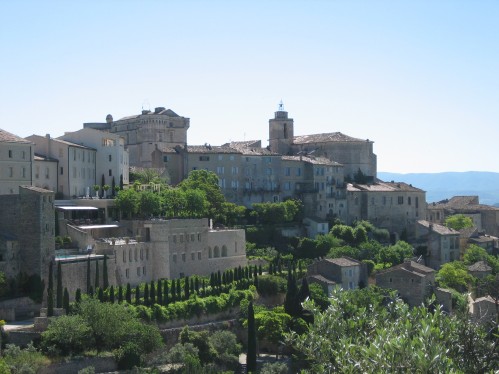I have made recently two new potato salad recipes, that are similar in a way, yet different. Both are great recipes to make spring into summer. Both use seasonal vegetables and finish with a toss of flavorful vinaigrettes while the salad ingredients are warm.
What makes them different is the type of potatoes used, red onion versus leeks, different herbs—parsley and thyme versus mint, and entirely different vinaigrettes. You can’t go wrong with either one.
The first recipe is from Elizabeth Bard’s book, Lunch in Paris, a fun and light romantic read about an American gal falling for a French man and his culture, while interjecting fabulous recipes along the way. Bard’s Picnic in Provence is also a fun read, and a sequel as her adventurous life continues in South France.
The second recipe is by Romel Bruno, recently published in The New York Times. This recipe is easy to make and I love the sherry vinegar and shallot flavor combination. This is a great side dish, but Bruno suggests adding hard-boiled eggs for a hearty vegetarian dinner.
Potato and Green Bean Salad
with Pastis VinAigrette
Lovingly Adapted from Elizabeth Bard’s Lunch in Paris
Recipe Note: Pastis is a refreshing summer apéritif, particularly loved in the South of France. I happen to have a bottle of it in my pantry. I believe you can find it at most liquor stores. This flavor adds a licorice kick. playing on the textures of crunchy beans and creamy potatoes. The original recipe calls for 1 teaspoon of Dijon mustard, and I think it needs two.
Ingredients:
2 teaspoons white wine vinegar
1 tablespoon lemon juice
1 tablespoon pastis or anisette
1/4 teaspoon coarse sea salt
1-2 teaspoons Dijon mustard
1/3 cup extra-virgin olive oil or more, up to 1/2 cup, to taste
1-1/2 pounds small red potatoes, halved or quartered
3/4 pound haricots verts, extra-thin French green beans, blanched
1 small red onion, minced
1/2 cup flat-leaf parsley, finely chopped
1 tablespoon fresh thyme (if you don’t have fresh, skip it)
1/2 cup tiny black niçoise olives
Directions:
Combine the first 7 ingredients for the vinaigrette in a glass jar or other airtight container. Shake vigorously to combine. You can make the vinaigrette several days in advance.
Place the potatoes in a pot of lightly salted cold water, bring to a boil, and cook them until tender (20 to 30 minutes).
Meanwhile, trim the beans and blanch them in lightly salted water for 3 to 4 minutes. They should remain bright green and retain their snap. Drain and rinse them under cold water; pat them dry with a paper towel.
Drain the potatoes. While they are still warm, placed them in a large bowl with the onion, parsley, thyme, olives, and green beans. Add the vinaigrette and toss to coat. Leave in the fridge for an hour or so that the flavors have a chance to blend. This salad is best served at room temperature. Yields: 4-6
















